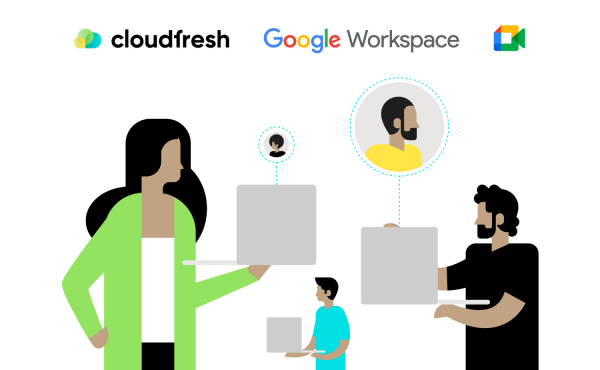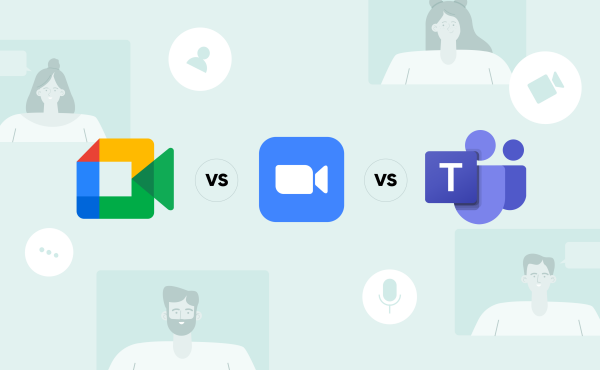7 ways to access Google Meet
Secure Communication: How Google Meet Protects Your Video Conferencing
Google designs, builds, and manages products on a trustworthy basis, provides strong security, and prevents attacks or information leaks. Google Workspace (ex., G Suite) and Google Meet are no exceptions. Businesses and educational institutions worldwide use Google Workspace (ex., G Suite) and stay connected without restrictions while working remotely.
Google Meet’s security controls are turned on by default, so organizations and users won’t have to do anything to keep them secure. This article will cover the main features of Google Meet that help protect you.
Active protection to fight abuse and block hijacking attempts
Google Meet uses a variety of anti-abuse tools to keep your meetings safe. These include measures to prevent web meetings and dialing from being stolen.
Google Meet makes it harder to programmatically brute-force meeting IDs (when attackers try to guess the meeting ID and make an unauthorized attempt to join it) by using codes 10 characters long and 25 characters long. The ability to join a meeting is limited in advance, 15 minutes before it starts, reducing the window in which a brute force attack is possible. External participants cannot join meetings unless they are invited through the calendar or have been invited by domain members. Otherwise, they must request to join the meeting, and their request must be accepted by a member of the host organization.
In addition, Google Meet is rolling out several features to help schools keep meetings safe and improve the remote learning experience for teachers and students, including:
- Only meeting organizers and calendar owners can disable or remove other attendees. This ensures that teachers cannot be removed or disabled by students.
- Only meeting organizers and calendar owners can approve requests made by external attendees. This means that students cannot allow external participants to join via video, and external participants cannot join the teacher.
- Meeting participants cannot rejoin meetings with nicknames that ended after the last participant left. If the instructor is the last person leaving a meeting with a title, students cannot join later without the instructor being present.
Secure deployment and access management for administrators and end users
We recommend installing the Google Meet app on your mobile device. Google Meet runs entirely in your browser to limit the attack surface and eliminate the need for frequent security patches. This means that Google Meet does not require any plugins or software to be installed if you use Chrome, Firefox, Safari, or Microsoft Edge.
To ensure that only authorized users administer and access Meet services, the product supports multiple 2-Step Verification account options. These include hardware and phone security keys and Google hints. In addition, Google Meet users can register an account with our Advanced Protection Program (APP), which provides maximum protection against phishing and account theft and is specifically designed for high-risk accounts.
For Google Workspace Enterprise and Google Workspace for Education customers, we offer Access Transparency, a solution that captures any Google access to Google Meet recordings stored on disk, as well as the reason for the access (for example, support team actions you might have asked for). Customers may also use the Data Regions feature to store personal data covered in Google Meet recordings in specific regions (such as the US or Europe).
Secure, interoperable, and reliable meeting infrastructure
In Google Meet, all data is encrypted by default when transferred between the client and Google for web browser video, Android and iOS apps, and meeting rooms with Google meeting equipment. For each participant and meeting, the Meet generates a unique encryption key that only exists for the duration of the meeting. This key is never stored on disk and is transmitted in an encrypted and secure RPC (remote procedure call) when setting up a meeting. The Meet fully complies with the IETF security standards for Datagram Transport Layer Security(DTLS) and Secure Real-time Transport Protocol(SRTP).
Security is an integral part of all Google activities and products. An in-house team of security and privacy professionals supports the software developers and operations team to ensure that security is always a part of Google products. All Google Cloud and Google Workspace (ex. G Suite) customers enjoy these features, including:
- Secure Design Framework: Google Meet takes advantage of Google Cloud’s in-depth security approach, which includes built-in security and a global private network. Google uses them to protect your information and privacy.
- Certification Compliance: All Google Cloud products, including Google Meet, undergo regular independent reviews of their security, privacy, and compliance controls, including review of standards such as SOC, ISO/IEC 27001/17/18, HITRUST, and FedRAMP. Products comply with regulations such as GDPR and HIPAA, as well as COPPA and FERPA for education.
- Incident Management: Meet has a precise data and security incident management process that defines actions, escalations, mitigations, resolution, and reporting of potential incidents that affect customer data.
- Reliability: The Google Network is designed to accommodate peak traffic and future growth in demand. She has shown her resilience with the recent spike in Meet usage.
- Transparency: Google Cloud clearly regulates the obligations for customer data: data is processed by the instructions of the data owner; customer data is never used for advertising purposes; Google data center locations are private
Investing in a Google Meet hardware license is a crucial step toward ensuring the highest level of security for your video conferencing hardware.
Cloudfresh is an authorized Google Cloud partner for Google Workspace (ex. G Suite), Google Meet, Chrome Enterprise, Chrome for Meet, and Hangouts for meet hardware and provides clients with consulting, expertise, sales, implementation, and support.













